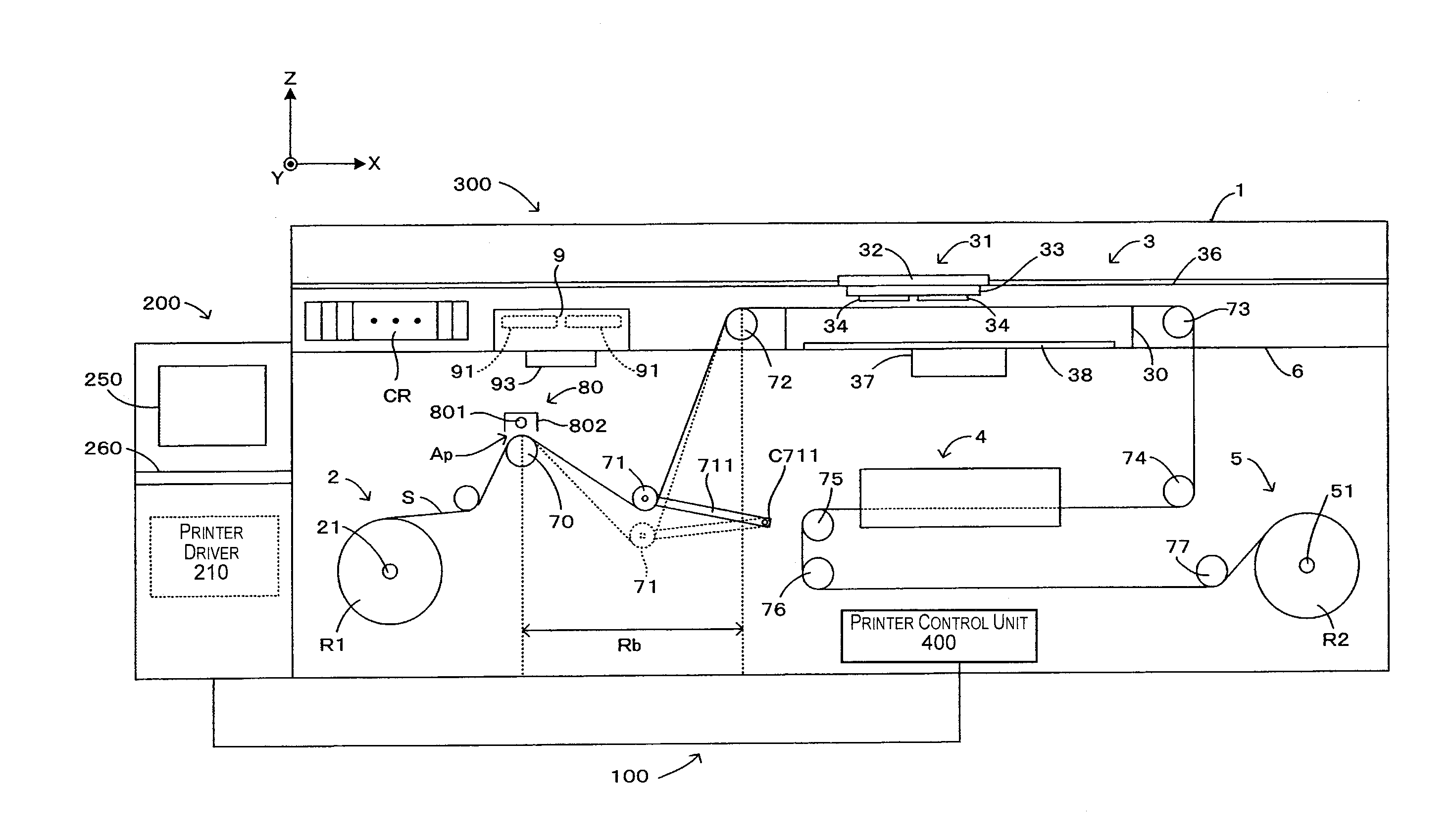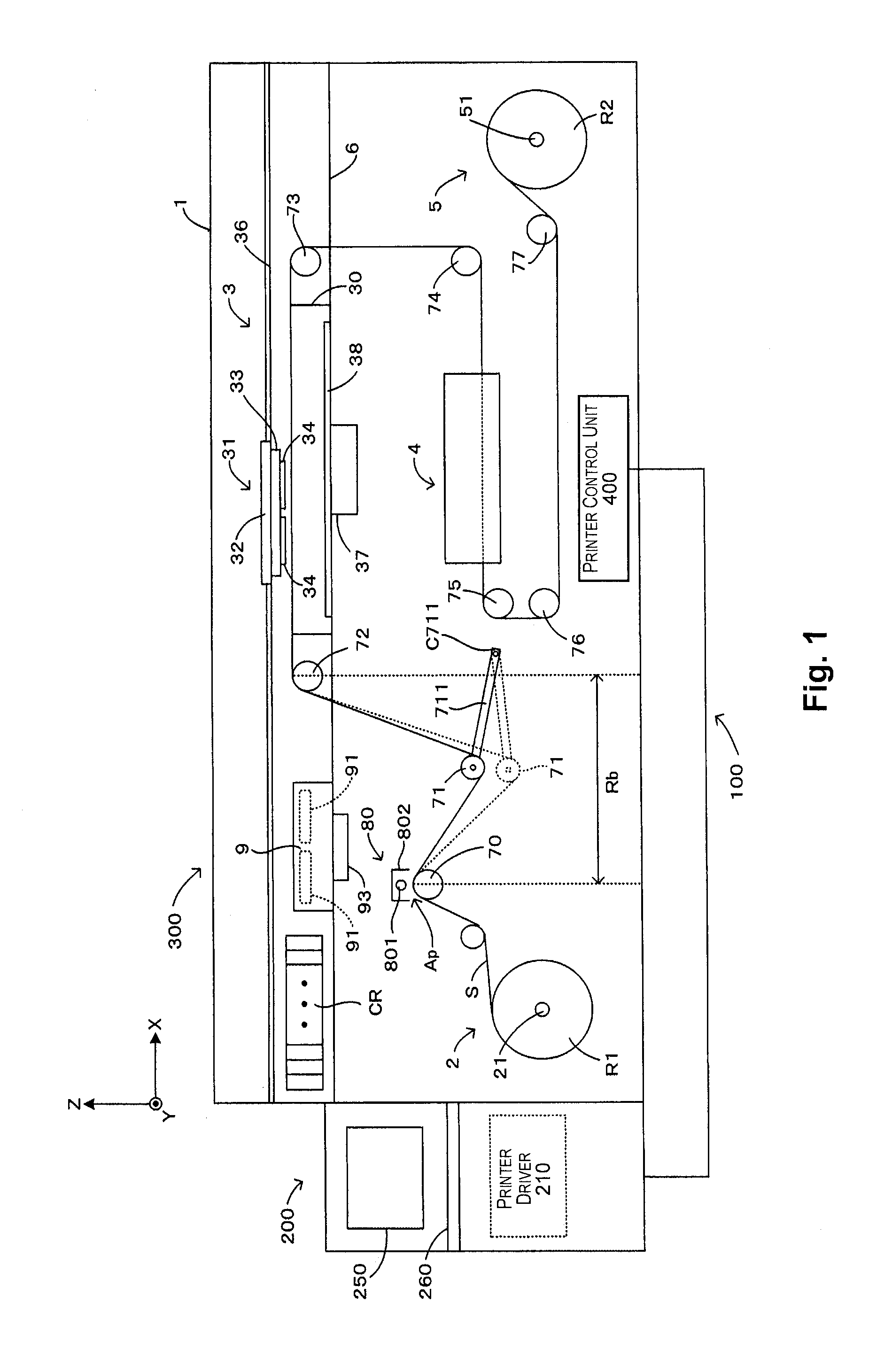Image recording device and image recording method
a recording device and image technology, applied in the field of image recording devices and image recording methods, can solve the problems of insufficient surface modification processing, waste of recording media, and risk of image inconsistency between the insufficient area and the other areas, and achieve the effect of increasing the adhesive properties of the liquid ejecting
- Summary
- Abstract
- Description
- Claims
- Application Information
AI Technical Summary
Benefits of technology
Problems solved by technology
Method used
Image
Examples
first embodiment
[0027]FIG. 1 is a pattern diagram showing an example of a printing system to which the present invention can be applied. Note that in FIG. 1 and the drawings thereafter, when necessary to clarify the arrangement relationship of each unit of the device, the X, Y, and Z orthogonal coordinates having the Z axis as the perpendicular axis are noted together. With the description below, the direction in which each coordinate axis (arrow) faces is the positive direction, and the opposite facing direction is the negative direction, and the Z axis positive side is handled as appropriate as the upper side, and the Z axis negative side as the lower side.
[0028]The printing system 100 is equipped with a host device 200 for generating printing data based on image data received from an external device such as a personal computer or the like, and a printer 300 for printing images based on the printing data received from the host device 200. This printer 300 prints an image (forms an image) using th...
second embodiment
[0073]FIG. 5 is a timing chart showing an example of the printing operation executed with the second embodiment. The difference between the second embodiment and the first embodiment is the timing at which the discharge instructions are output, so hereafter, we will give a description with this difference part as the focus, and for other parts, the correlating code numbers will be given, and descriptions will be omitted as appropriate. It goes without saying that by being equipped with constitutions in common with the first embodiment, that the same effects as those of the first embodiment are also exhibited with the second embodiment.
[0074]With the second embodiment, the mechanism controller 420 continuously outputs discharge instructions to the discharge bias generator 84 from the point in time when the passage time Tp starts through the point in time when a prescribed time Te has elapsed from when that passage time Tp ends. In other words, the discharge instructions output simult...
third embodiment
[0077]FIG. 6 is a timing chart showing an example of the printing operation executed with the third embodiment. The difference between the third embodiment and the aforementioned embodiments is the timing at which the sheet S passes through the processing position Ap and the timing at which discharge instructions are output, so hereafter, we will give a description with this difference part as the focus, and for other parts, the correlating code numbers will be given, and descriptions will be omitted as appropriate. It goes without saying that by being equipped with constitutions in common with the aforementioned embodiments, the same effects as those of the aforementioned embodiments are also exhibited with the third embodiment.
[0078]With the third embodiment, the outlet shaft 21 does not start conveying the sheet S until the prescribed time Te (>d) has elapsed from the point in time when conveying of the sheet S to the platen 30 by the roller 72 has started (in other words, the po...
PUM
 Login to View More
Login to View More Abstract
Description
Claims
Application Information
 Login to View More
Login to View More - R&D
- Intellectual Property
- Life Sciences
- Materials
- Tech Scout
- Unparalleled Data Quality
- Higher Quality Content
- 60% Fewer Hallucinations
Browse by: Latest US Patents, China's latest patents, Technical Efficacy Thesaurus, Application Domain, Technology Topic, Popular Technical Reports.
© 2025 PatSnap. All rights reserved.Legal|Privacy policy|Modern Slavery Act Transparency Statement|Sitemap|About US| Contact US: help@patsnap.com



